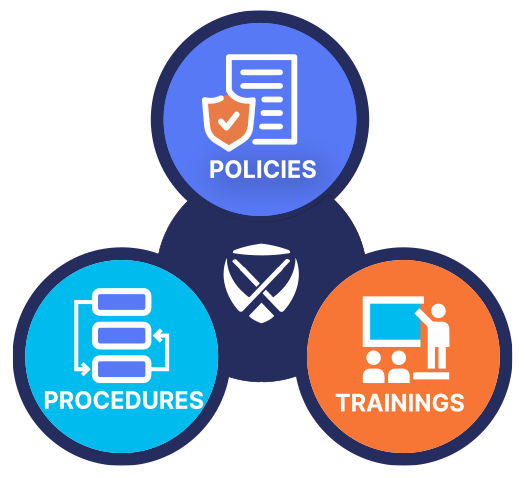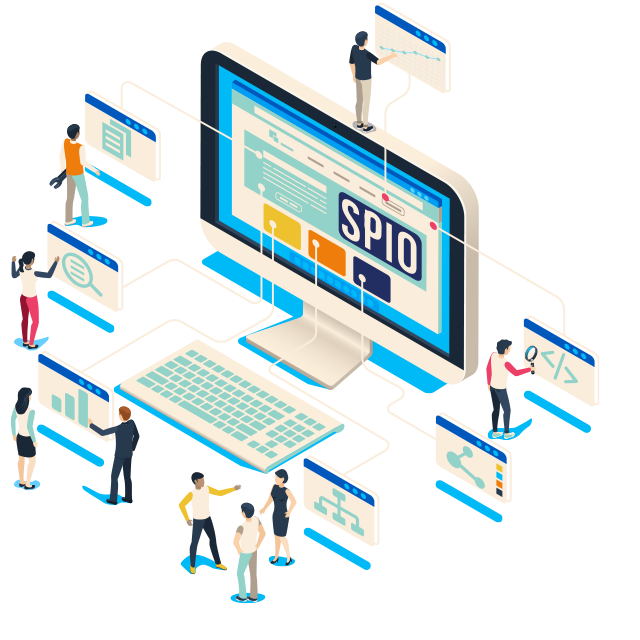A security standard is a framework that an organization can use to improve their cybersecurity posture. Each set of standards outlines techniques for protecting the cybersecurity environment of a user or organization, including networks, devices, software, processes, information in storage or transit, applications, services, and systems that can be connected directly or indirectly to networks. The purpose of IT security standards is to reduce risk by preventing or mitigating cyber-attacks. Whichever standard you choose to follow will include policies, procedures, training, and tasks to better protect your networks, systems, and data.
Many US organizations build their security policies to align with the NIST 800-53 cybersecurity standard and compliance framework developed by the National Institute of Standards in Technology. Additionally, many industry-specific compliance certifications and cybersecurity frameworks align with NIST 800-53NIST 800-53 is a special publication by the National Institute of Standards and Technology (NIST) that provides a catalog of security and privacy controls for federal information systems and organizations. The publication outlines security requirements and guidelines for the selection, implementation, and assessment of security controls to protect the confidentiality, integrity, and availability of information systems. standards. Some of the most common include:
CIS 18CIS 18 refers to the Center for Internet Security's Critical Security Controls for Effective Cyber Defense. It is a set of 18 security controls that provide organizations with a prioritized framework for improving their cybersecurity posture. - The Center for Internet SecurityCIS (Center for Internet Security) is a non-profit organization in the cybersecurity industry that provides resources, tools, and best practice guidelines to help organizations improve their cybersecurity posture. CIS benchmarks are widely used to provide guidelines for securing systems and networks. (CIS)’s critical security controls (aka CIS Controls V8, and known as CIS 20CIS 20 refers to the Center for Internet Security's Critical Security Controls for Effective Cyber Defense version 8.0. It is an updated version of the original CIS 18 controls. until 2021), a prioritized set of cybersecurity best practices that can help protect enterprises from the most pervasive and dangerous attacks, based on information the CIA found most relevant to curb common attacks.
CMMC - Cybersecurity Maturity Model CertificationCybersecurity Maturity Model Certification (CMMC) is a framework developed by the United States Department of Defense (DoD) to ensure that contractors and suppliers meet specific cybersecurity requirements when working on DoD contracts. Contractors and suppliers must achieve the appropriate level of CMMC certification to be eligible for DoD contracts.. A certification program created by the Department of Defense (DoD) to assess the cybersecurity postures of organizations. All DoD suppliers have to be certified to the appropriate CMMC level in order to continue doing business with DoD under the mandated CMMC requirements.
HITRUST CSF - The Health Information Trust Alliance (HITRUST) is Common Security Framework (CSF) of data protection standards that help organizations safeguard sensitive information, manage information risk, and reach compliance goals, primarily in the healthcare or health-tech space. The current version of HITRUST CSF is v11, released in January 2023.
ISO 27001ISO 27001 is a globally recognized standard for information security management systems (ISMS). It provides a systematic approach to managing sensitive company information and mitigating cybersecurity risks. ISO 27001 includes a set of best practices for establishing, implementing, maintaining, and continually improving an ISMS, which helps organizations identify and manage information security risks and protect against cyber attacks. - An international standard to manage information security, set by the International Organization for StandardizationISO (International Organization for Standardization) is an independent, non-governmental international organization that develops and publishes standards for various industries and sectors, including cybersecurity. (ISO).
FedRAMP - The Federal Risk and Authorization Management ProgramFedRAMP (Federal Risk and Authorization Management Program) is a US government program that provides a standardized approach to security assessment, authorization, and continuous monitoring of cloud products and services. It aims to ensure that cloud systems used by federal agencies meet a minimum set of security requirements to protect sensitive government information. FedRAMP is mandatory for cloud service providers that want to offer their services to federal agencies. (FedRAMP) is a US federal government-wide framework providing a standardized approach to security assessment, authorization, and continuous monitoring for cloud products and services. Any organization providing cloud services (SaaSSaaS stands for Software as a Service, which is a cloud computing model that delivers software applications over the internet as a subscription-based service. With SaaS, users can access software applications and data from anywhere with an internet connection, without the need for on-premise installation or maintenance. SaaS providers manage the infrastructure, security, and maintenance of the software application, freeing users from the burden of software updates, patches, and backups., PaaSPaaS stands for Platform as a Service, which is a cloud computing model that provides a platform for developing, running, and managing applications without the need for infrastructure management. PaaS providers offer a complete software development environment including hardware, operating systems, and application frameworks, allowing developers to focus on coding and deploying applications rather than managing infrastructure., IaaSIaaS (Infrastructure as a Service) is a cloud computing model that provides virtualized computing resources, including servers, storage, and networking, over the internet.) to federal government organizations might achieve FedRAMP certification.
SOC 2SOC 2 is a type of Service Organization Control (SOC) report that evaluates the effectiveness of an organization's controls related to security, availability, processing integrity, confidentiality, and privacy. These reports are based on the Trust Services Criteria (TSC) developed by the AICPA and are commonly used by technology and cloud service providers to demonstrate compliance with industry standards and best practices. - A report which provides assurance over a vendor’s cybersecurity controls, based on the American Institute of Certified Public AccountantsIn terms of cyber security, the AICPA (American Institute of Certified Public Accountants) is an organization that provides guidelines and best practices for assessing and reporting on the effectiveness of an organization's cybersecurity risk management program. This includes the AICPA's SOC (Service Organization Controls) reporting framework, which consists of three types of reports: SOC 1, SOC 2, and SOC 3. (AICPA)’s five Trust Service CriteriaTrust Service Criteria (TSC) are a set of standards developed by the American Institute of Certified Public Accountants (AICPA) to evaluate the effectiveness of controls over information and systems. TSC cover areas such as security, availability, processing integrity, confidentiality, and privacy. These criteria are used in SOC 2 and SOC 3 audits, which assess the controls and processes of service organizations that provide services to other businesses.: confidentiality, availability, security, processing integrity, and privacy. The SOCService Organization Controls (SOC) are a set of standards developed by the American Institute of Certified Public Accountants (AICPA) to help organizations assess and report on the effectiveness of their internal controls. SOC reports provide assurance to customers and stakeholders that service organizations have appropriate controls in place to protect sensitive data and assets. 2 allows a vendor to demonstrate the robustness of its processes, vendor management effectiveness, and dedication to protecting the data of customers and partners.
SPIO will help your organization comply with the most common standards through its easy-to-implement and editable policies, procedures, and training. All of SPIO’s policies adhere to NISTNIST stands for the National Institute of Standards and Technology, which is a US government agency responsible for developing and publishing standards and guidelines related to information security and cybersecurity. 800-53 standards. Additionally, SPIO has cross-referenced program activities to other standards, including SOC 2, ISO 27001, NIST CSFNIST CSF (Cybersecurity Framework) is a set of guidelines and best practices for organizations to manage and reduce cybersecurity risks. The NIST CSF includes five core functions - Identify, Protect, Detect, Respond, and Recover - which serve as a foundation for developing and improving an organization's cybersecurity posture., CIS 18, and CMMC to make sure you get credit for the work you do with customers and your management team. SPIO is easy-to-implement and covers all areas of cybersecurity, including:
With powerful automated tools, SPIO has automated complicated security activities so you can focus on your business. SPIO provides network scans, user audits, risk management, and security questionnaires. And SPIO will help you keep track of what you need to do to comply with NIST standards by helping you to assign tasks, set due dates, keep running notes, and attach evidence.


SPIO helps SMBs implement comprehensive cybersecurity. Start a free trial today to track the policies, procedures, and tasks needed to be confident in your security posture.